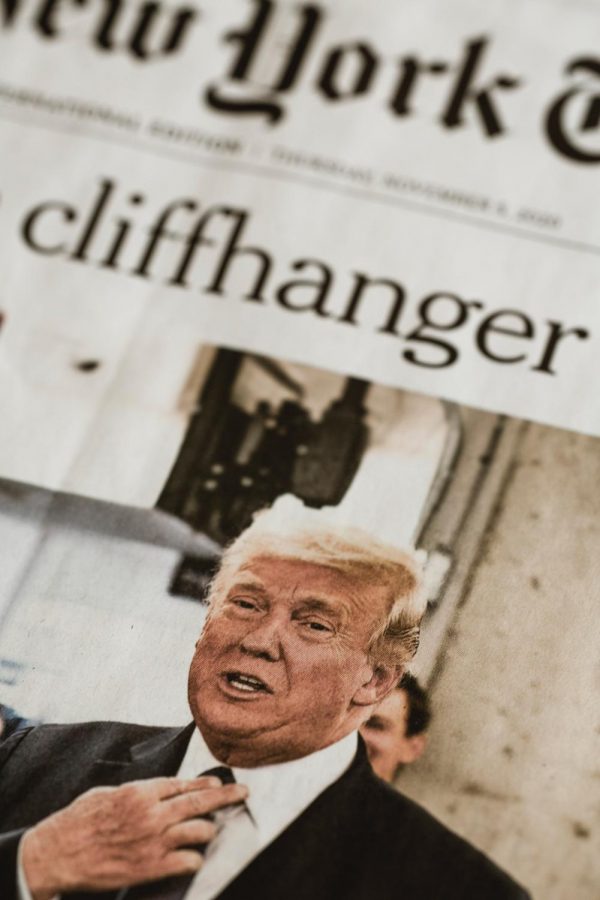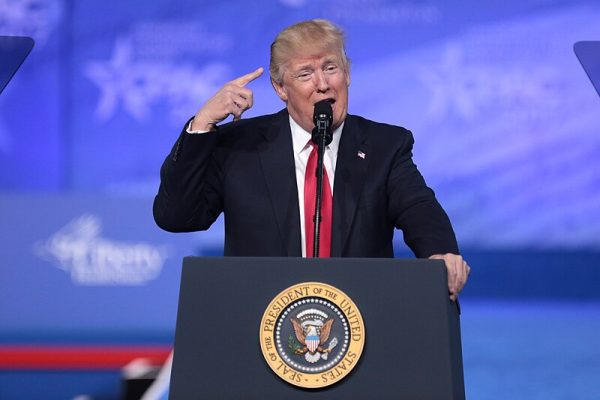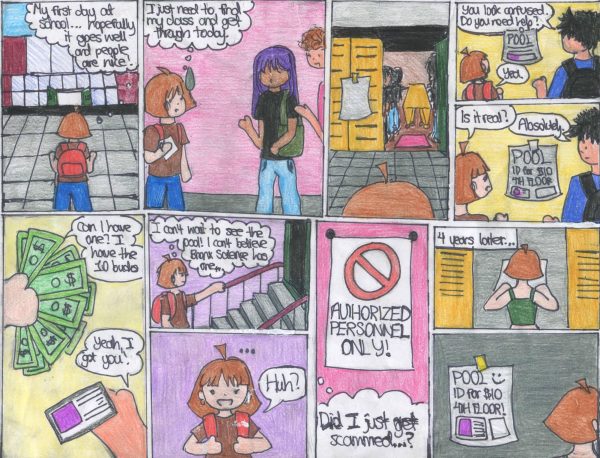How Will Former President Donald Trump Be Remembered?
Now that the United States is under the leadership of President Joseph Biden, how should we assess Trump’s presidency?
An international daily newspaper from Thursday November 5th, 2021, reveals sentiments prior to the November 6th, 2021 presidential election the following day.
People like Donald Trump only see the consequences of their actions when it is right under their nose, staring them in the face.
On November 7th, 2020, the Electoral College declared Joe Biden, the winner of the 2020 Presidential Election. Trump responded demanding recount after recount, unable to accept that he had to give up the presidency. Eventually, however, he had to look at the truth straight in the eyes. But what made the acceptance of defeat so hard for him?
Why did this man refuse to accept defeat when he had it coming?
Let us rewind to January 2017.
The very first project that Trump undertook during his presidency was the border wall. Trump’s promise to build a wall and make Mexico pay for it was one of his campaign highlights. “I’m going to build a wall and Mexico’s gonna pay for it,” he said, during campaign speeches. On January 25th, 2017, he signed an executive order to begin the construction of the wall. However, the outcome of the wall, as many Americans predicted, was not fruitful. There were only a couple hundred miles built in the end, and every last penny for it was paid for by the United States.
That was his first mistake.
His second mistake was the notorious “Muslim ban,” a ban prohibiting travel from several predominantly Muslim countries. His supporters called it a travel ban and furiously denied that the ban was Islamophobic. Within days, the effects of the ban began to negatively impact people everywhere. The branches of the government tossed the ban back and forth, debating its constitutionality. This executive order was one of the most controversial in United States history.
The next controversial thing that Trump did was pull the United States out of the Paris climate agreement, a pact between 196 countries designed to limit global warming so that the world would be climate-neutral by 2050. In his 2016 campaign, Trump stated that he would withdraw from the pact, and on June 1st, 2017, he went through with his word.
To justify doing this, he made it seem that remaining in the Paris Climate agreement would destroy the economy. However, every single argument against the pact during the withdrawal announcement was backed up by sketchy statistics and experiments with strange methodology.
In the span of just half a year, Donald Trump undid decades of progress. And his term was not even close to being over.
That July 2017, Trump failed to overturn Obamacare.
Something tipped. Power is something that easily slides in and out your hands, like water. But once the water moves too much, storms arise, and when storms arise, chaos happens.
In August of that same year, far-right groups held riots to protest against the removal of Confederate General Robert E. Lee’s statue in Charlottesville, Virginia. In response, peaceful counter-protests arose as well. However, things took a turn for the worse. A Neo-Nazi sympathizer drove his car straight into the middle of the peaceful protest, killing a 32 year-old woman. In response to these events, President Trump stated that there were “very fine people on both sides,” insisting that both sides were to blame for the incident. Fast forward three years later, in response to peaceful BlackLivesMatter protests, Trump instructed police to tear gas protestors who were fighting for their human rights. Of course, people noticed the different ways Trump diffused these situations. He referred to armed white supremacist groups as “very fine people” and pegged civil rights activists as violent and even dangerous.
In 2017, tensions between the left and the right began to rise faster. Meanwhile, in 2018, the Trump administration carried out some of the most important economic and diplomatic actions in Trump’s four years in office. At the end of 2017, the Trump administration recognized Jerusalem as Israel’s capital, stating that the United States would relocate its embassy from Tel Aviv to Jerusalem. This decision was met with disapproval from other world leaders, but many other countries in the United Nations showed support, stating that they would consider relocating their embassies as well. Mid-2018, the U.S. imposed tariffs on aluminum and steel from Mexico, Canada, and the European Union. Shortly after, the U.S. imposed tariffs on 50 million dollars of imported Chinese goods, effectively beginning a trade war with China.
In April 2019, Former FBI Director Robert Mueller published his investigation report on Trump’s criminal conspiracy with Russia to steal the 2016 election. While Mueller alleged no criminal conspiracy in his report, he did find that the Trump campaign and several people who were linked to Russia communicated frequently, and that these people did indeed interfere with the 2016 election in Trump’s favor. Furthermore, the report stated that Trump had attempted to obstruct the investigation multiple times.
In December 2019, Trump was impeached for abuse of power for forcing Ukrainian President Volodmyr Zelensky to investigate future political opponent Joe Biden during a phone call conversation, a transcript of which the White House later released. Because of the Senate’s Republican majority, he was acquitted.
The onset of 2020 brought the onset of the current Coronavirus pandemic. COVID-19 and quarantine made life more difficult for everyone. Much of society went virtual (Zoom meetings and Zoom classes, for instance) and the entire world seemed to be communicating over Zoom. It did not help that the Trump administration handled the pandemic poorly. The Trump administration downplayed the severity of the Coronavirus. They did not provide health care workers with adequate supplies. The President himself went out of his way to condemn researchers whose results proved him wrong. To date, over half a million people in the United States alone have die from the Coronavirus. The entire country eventually went into lockdown.
When it seemed that things could not get any worse, May of 2020 rolled around. Forty-six-year-old George Floyd was murdered by policeman Derek Chauvin in a restrained arrest. This incited nationwide protests that would go on into the next year. Trump responded to the protest with nothing but violence. Unlike the riots that occurred in Charlottesville, Trump was quick to condemn the protestors and call them “thugs.”
That November 2020, Joe Biden won the 2020 Presidential Election, and a wave of relief washed over many people in the country. However, it seemed that things were not quite over yet. January 6th, 2021 brought angry mobs to the United States Capitol as lawmakers confirmed Biden’s victory. Damage was done to the capitol building and hardly anyone was arrested, unlike during the peaceful left-wing demonstrations that had occurred the previous May. A week after this, Trump was impeached for the second time, making him the only president in United States history to be impeached twice.
History will always repeat itself. But that does not mean we should ever lose hope.
History will always repeat itself. But that does not mean we should ever lose hope.
Melanie Lin is an Editor-in-Chief for 'The Science Survey.' She enjoys portraying mundane things in fascinating ways through journalistic writing and describing...











